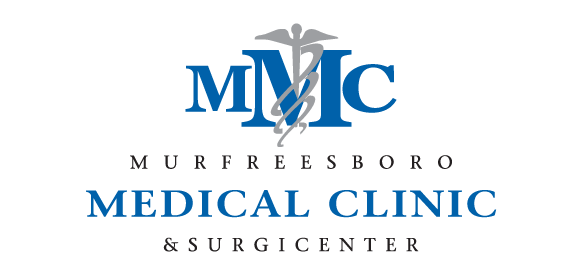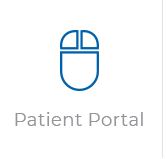What is breast reconstruction?
Breast reconstruction is a procedure to rebuild a breast after the breast has been removed with a mastectomy. A plastic surgeon uses a balloonlike expander and a silicone implant or your own body tissue to rebuild the breast.
The implant may be a silicone shell filled with saline (saltwater) or silicone gel. Instead of an implant, your surgeon may use tissue from other parts of your body to reconstruct the breast.
When is it used?
You may choose to have your breast rebuilt after you have had a mastectomy to remove your breast. Breast reconstruction may be started when you have the mastectomy or at any time afterwards. You may need 2 or 3 operations before the reconstruction is complete.
Another choice is to not have the operation and accept your changed appearance, or to wear a breast form (also called a prosthesis) inside your bra. You should ask your healthcare provider about your choices.
How do I prepare for this procedure?
There are many support groups for women who have had mastectomies. These support groups are usually made up of former cancer patients. Contacting a support group can help you learn what to expect from the surgery and give you emotional support.
Discuss with your provider the size and contour of breasts you would like to have. Silicone implant reconstruction and tissue reconstruction produce different results. In addition, surgery may be needed on the opposite breast to provide the best match in size and shape. Ask your surgeon about this.
Plan for your care and recovery after the operation. Find someone to drive you home after the surgery and stay with you for a night or two. Allow for time to rest and try to find other people to help you with your day-to-day duties.
Follow your healthcare provider's instructions about not smoking before and after the procedure. Smokers heal more slowly after surgery. They are also more likely to have breathing problems during surgery. For this reason, if you are a smoker, you should quit at least 2 weeks before the procedure. It is best to quit 6 to 8 weeks before surgery. Also, your wounds will heal much better if you do not smoke after the surgery. This is especially important if you choose to have reconstruction using tissue from another part of your body.
If you need a minor pain reliever in the week before surgery, choose acetaminophen rather than aspirin, ibuprofen, or naproxen. This helps avoid extra bleeding during surgery. If you are taking daily aspirin for a medical condition, ask your provider if you need to stop taking it before your surgery.
Follow any other instructions your provider gives you. Eat a light meal, such as soup or salad, the night before the procedure. Do not eat or drink anything after midnight or the morning before the procedure. Do not even drink coffee, tea, or water.
What happens during the procedure?
You are given a general anesthetic. A general anesthetic relaxes your muscles, puts you to sleep, and prevents you from feeling pain.
The surgeon places a balloonlike expander under your skin and chest muscles in the area where your breast was removed. The expander is inflated with saline to stretch the skin. Additional saline is injected into the expander every few weeks. The stretching takes many weeks, depending on how much skin there is and how much it needs to be stretched.
When the skin has stretched to the right size, you will have the next operation. You will be given an anesthetic and then the surgeon may replace the expander with an implant under the skin flap. This implant is a shaped silicone bag that is filled with saline or silicone gel.
Instead of an implant, you and your surgeon may decide to use tissue from your abdomen or back to reconstruct the breast. Skin from the lower abdomen with the attached muscle is moved to the chest, and blood vessels to the muscle are attached under the arm. This is a more complicated procedure than implant reconstruction but may give a better cosmetic result. Talk with your surgeon about which procedure would be best for you.
As the final step, the surgeon may reconstruct the nipple and areola (the dark patch of skin around the nipple). The surgeon may use tissue from the reconstructed breast or a graft of skin from your underarm or groin. Sometimes tattooing is done instead of or in addition to the tissue graft.
What happens after the procedure?
You may be in the hospital for 24 hours if an expander was placed. If a tissue flap was used to reconstruct your breast, you may be in the hospital several days.
You will have drainage tubes through your skin for a few days after surgery. The tubes remove fluid from the area where you had surgery. Your surgeon will tell you how to care for these drains and arrange for you to come to the office for their removal.
Feeling tired and sore for up to 2 weeks after surgery is common. You can do light activity within a few days. You should avoid overhead lifting, strenuous sports, and sexual activity for 3 to 6 weeks. It is especially important to follow your healthcare provider's instructions about activity if your reconstruction was done with the tissue transfer method. You will have follow-up appointments with your provider to check the progress of your recovery.
In addition to the scar from the removal of the breast, you will have a scar on your back or abdomen if skin and muscle tissues were taken from these areas. Scarring is permanent, but in time, the scars are less noticeable as they flatten and lighten in color. Reconstruction cannot restore normal sensation to the breast, but sometimes some feeling does return.
When you have completely recovered from surgery, you should have regular checkups, including yearly mammograms of your other breast, to look for any recurrence of breast cancer.
Ask your healthcare provider what other steps you should take.
What are the benefits of this procedure?
You will have a more normal figure and may feel better about yourself.
What are the risks associated with this procedure?
Risks of breast reconstruction include:
- There are some risks associated with general anesthesia. You should discuss these risks with your healthcare provider.
- You may develop a hematoma, which is a collection of blood or a blood clot from a leak in a blood vessel. It may form within hours after surgery in the pocket where the implant has been placed. It may cause swelling, pain, and bruising. A large hematoma will need to be drained surgically.
- Several days after surgery you may develop a collection of fluid in the area where you had surgery. This usually happens after the drains have been removed. The fluid can be removed easily by your healthcare provider with a needle and syringe.
- A capsule may form around the implant. The area may become firm or tender and need regular massage.
- Your reconstructed breast may be hard or lumpy or feel tight.
- Your reconstructed breast may become infected around the implant.
- Your breasts may be unequal in size, shape, position, or contour. You may want further surgery on one or both of the breasts to try to make them similar.
- Your arm and shoulder movements may be restricted or painful. You may need to do range-of-motion exercises to regain normal movement.
- An implant may rupture (tear) or deflate, which may require another surgical procedure to remove and replace the implant.
- There have been some special concerns about the safety of implants filled with silicone gel. After rigorous scientific review, the US Food and Drug Administration (FDA) determined that the implants are safe and effective. The FDA announced approval of the use of silicone gel-filled implants in November 2006. For more information on breast implants and their safety, see the FDA Web site: http://www.fda.gov/cdrh/breastimplants/index.html.
You should ask your provider how the risks apply to you.
To get more information about reconstruction after mastectomy for breast cancer, talk to your provider or contact:
- American Cancer Society, Inc. 800-ACS-2345 (800-227-2345)
- Cancer Information Service 800-4-CANCER (800-422-6237)
When should I call my healthcare provider?
Call your provider away if:
- The skin over the breast becomes irritated or starts to peel off.
- You have redness or unusual drainage from the cuts.
- You have fever or unexpected pain.
Call during office hours if:
- You have questions about the procedure or its result.
- You want to make another appointment.







